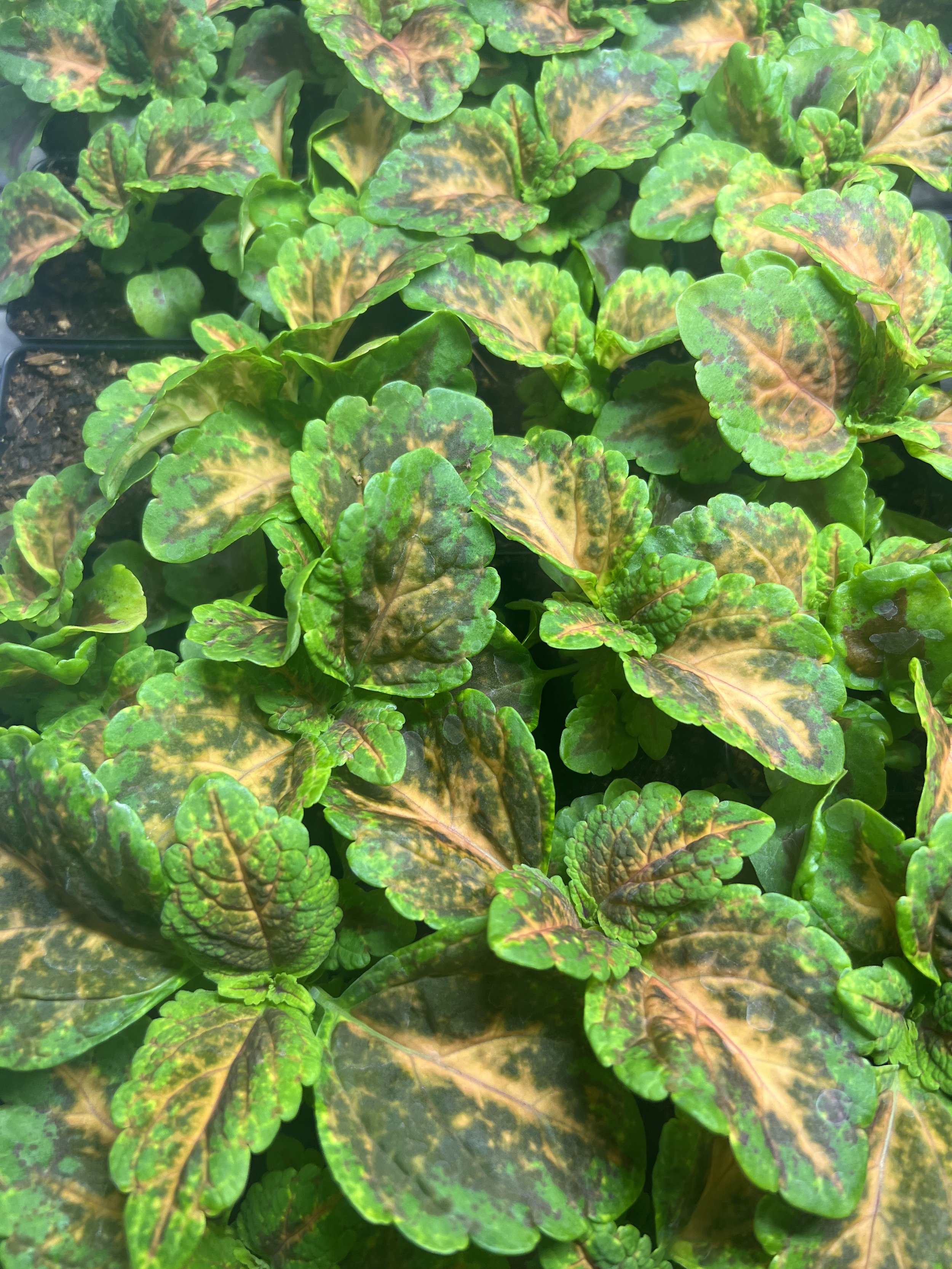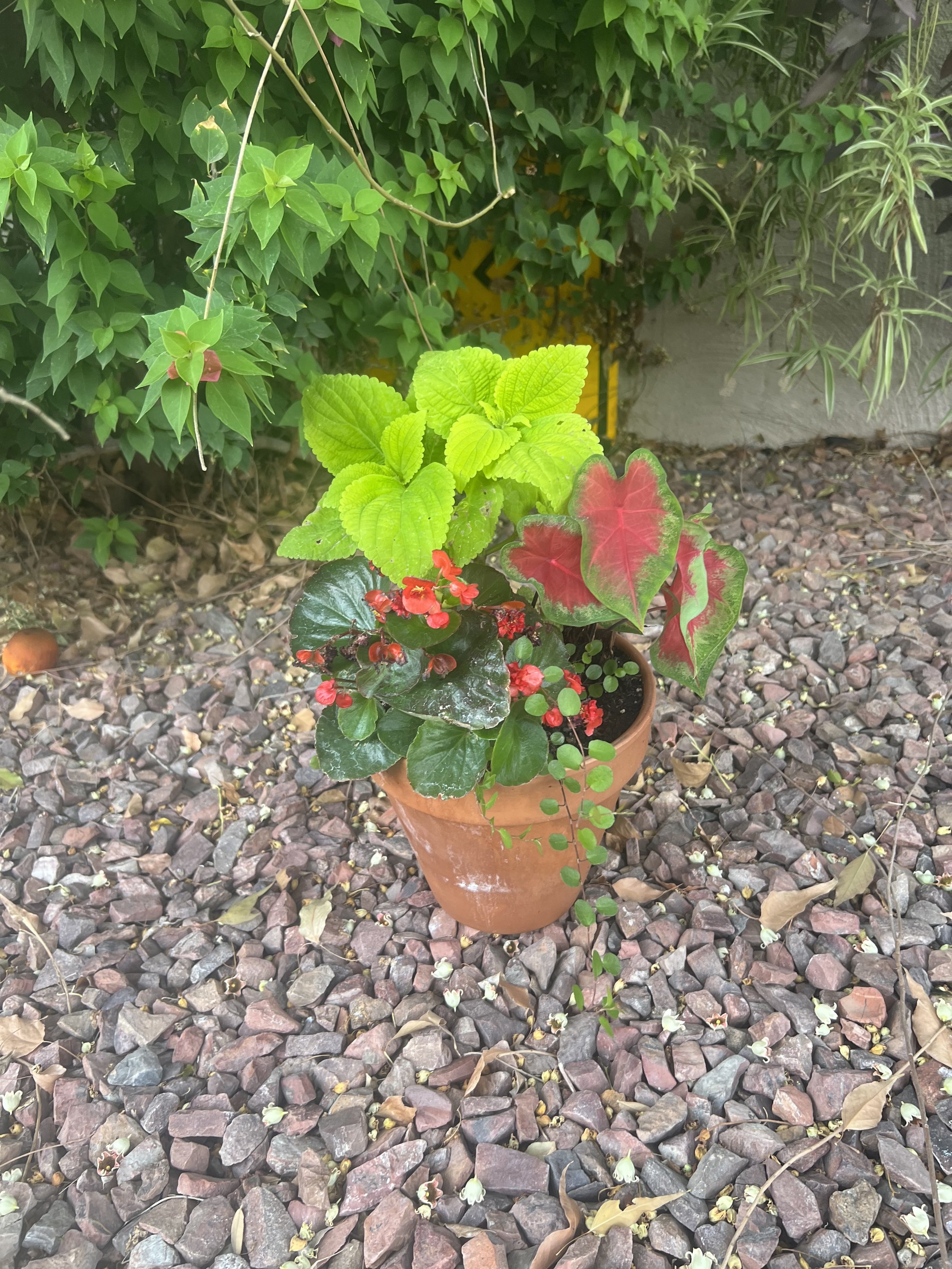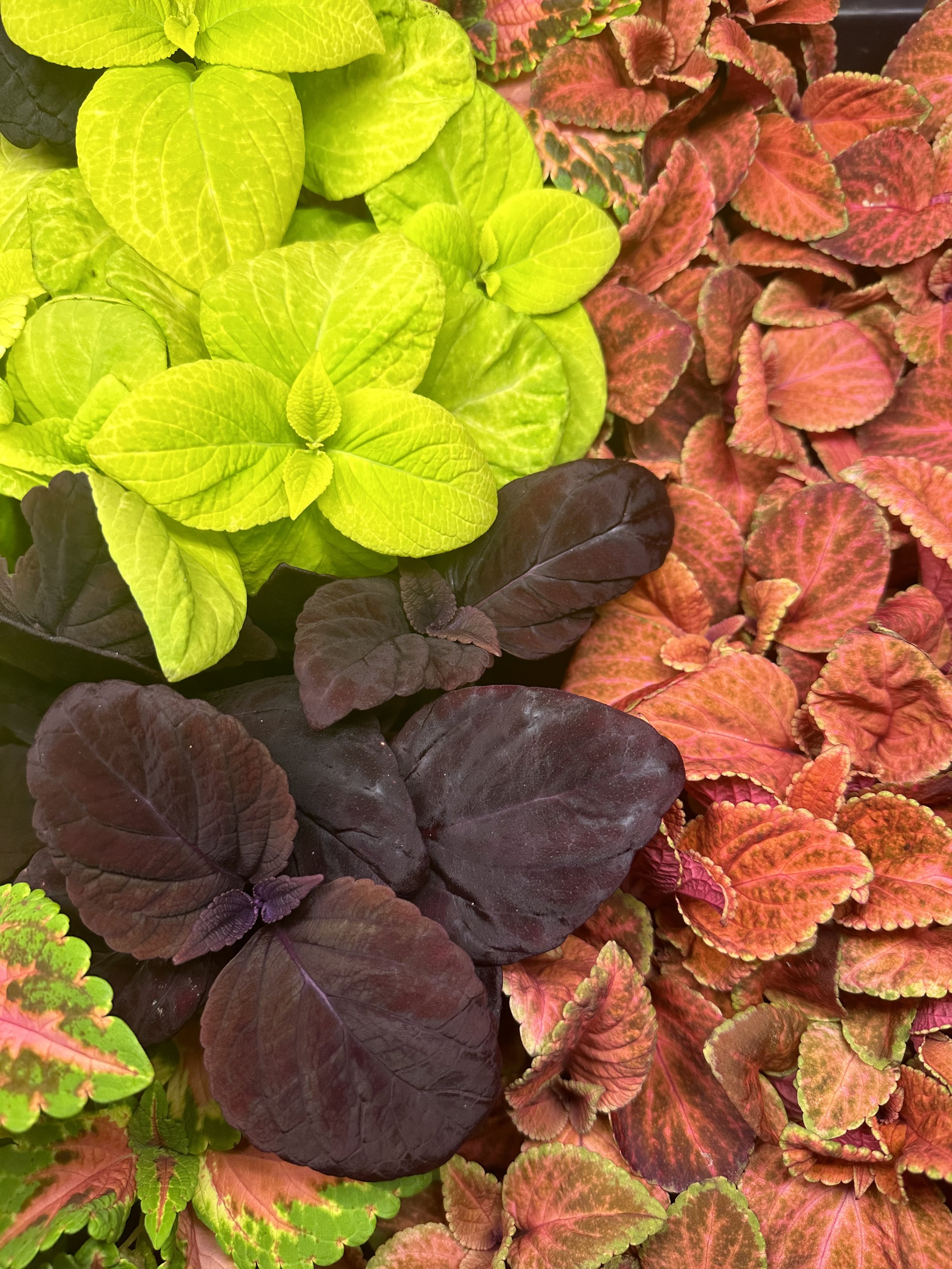Coleus
Overview:
Coleus is a beautiful ornamental plant that is primarily grown for its foliage. They come in an array of colors from chartreuse, chocolate, purple, and a variegated mix of stunning colors. Some of the leaves look as if someone painted them! Depending on the variety they can take full sun to full shade depending on your climate. Coleus originate from a tropical climate, so they prefer warmer, humid climates. Here in Phoenix, I like to grow them in full shade, the morning sun is okay when temperatures are not blistering. They are easy to grow with a few tips and ticks.
Starting seeds:
Starting seeds is fairly easy to do for coleus. I like to lightly cover them in seed starting mix, with a fine layer of vermiculite. Place a humidity dome on your seed starting tray and place it underneath a grow light inside. Keep air temperature between 70-85. The warmer the air temperature, the faster these seedlings will grow. I like to bump them into 4” containers to give them a headstart before planting them outside. Here in Arizona, I keep my seedling room at about 80 degrees, and they are ready to plant outside within 5-6 weeks.
Check out my seed starting guide for more tips and tricks on seed starting.
Coleus is extremely easy to start from cuttings as well. Fill a 6-pack with seed starting mix and moisten the soil. Take cuttings of the growth tips, and place them in the soil. I like to place the 6-pack on a tray, place a humidity dome over the cuttings, and place it near a grow light. Roots will begin to develop, at that point, you can take the humidity dome off and plant out your new plants.
When to plant outdoors:
After the last frost. In the Phoneix area, I like to plant them once nighttime temps get about 45, or when high temps get below 105 in the summer. Typically I plant them in March and September.
Spacing:
6-12”
Height:
12-36”
Sun:
Full Shade to Full sun depending on varieties. In Arizona, full shade, to morning sun is advised. Protect from sweltering heat above 105 degrees.
I like to Fertilize weekly with a liquid fertilizer. I like to apply granular fertilizer on a monthly basis. When it’s below 60 degrees out, it’s best to use liquid fertilizers. The nutrients are broken down and the plants can absorb them quickly. Most granular fertilizers require heat to break down for the plant to absorb.
Care:
Plants like consistent moisture but they do like to dry out in between waterings. Make sure to pinch your plants when they are 6-9” tall for a bushier plant if desired.
Typical months in the garden:
After the last frost to the first frost in most gardening zones. In Phoenix we enjoy them typically from September - to early December, and again from March- to early June.
Flower Pairings:
Wireline, caladium, impatients, polka-dot plant, sweet potato vines, begonias, and more!
Cut use:
This isn’t a white used plant for cut arrangements, but they hold up beautifully in water. You can use them mixed with other florals or by themselves. If it’s in water long enough they can start to form new roots!
Seed Sourcing:
Swallowtail Seeds, Baker Creek, and Geo Seed are my go-to’s.
Favorite varieties:
Wizard Sunset, Wizard Green, Palisade Purple, Proven winners varieties.
Baker Creek “Pinto Mix’
Above: Backer creek ‘Pinto Mix’
Above: Wizard Sunset
Above: Wizard Sunrise
Puppy rose enjoying the Coleus
Above: Wizard mix and ‘Giant Exhibition Palisandra’ (Purple coleus)
Proven winners ‘Wicked Witch’ and ‘Rediculous’ coleus













